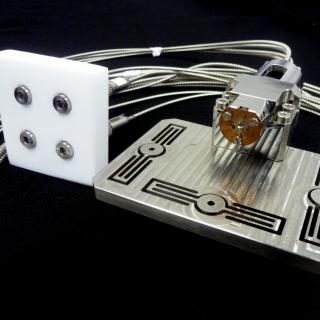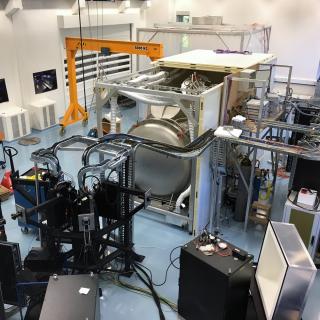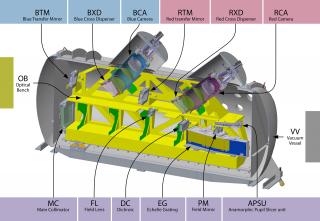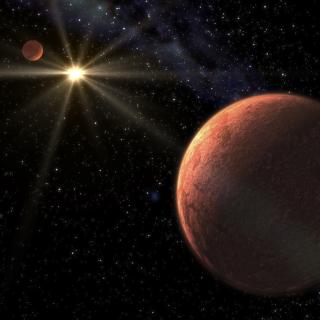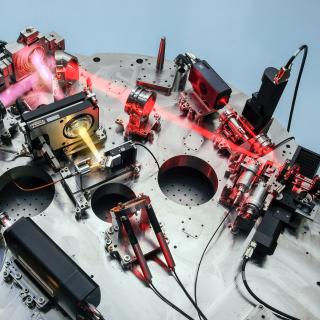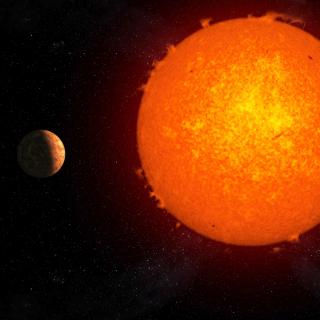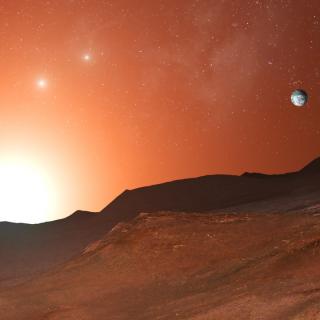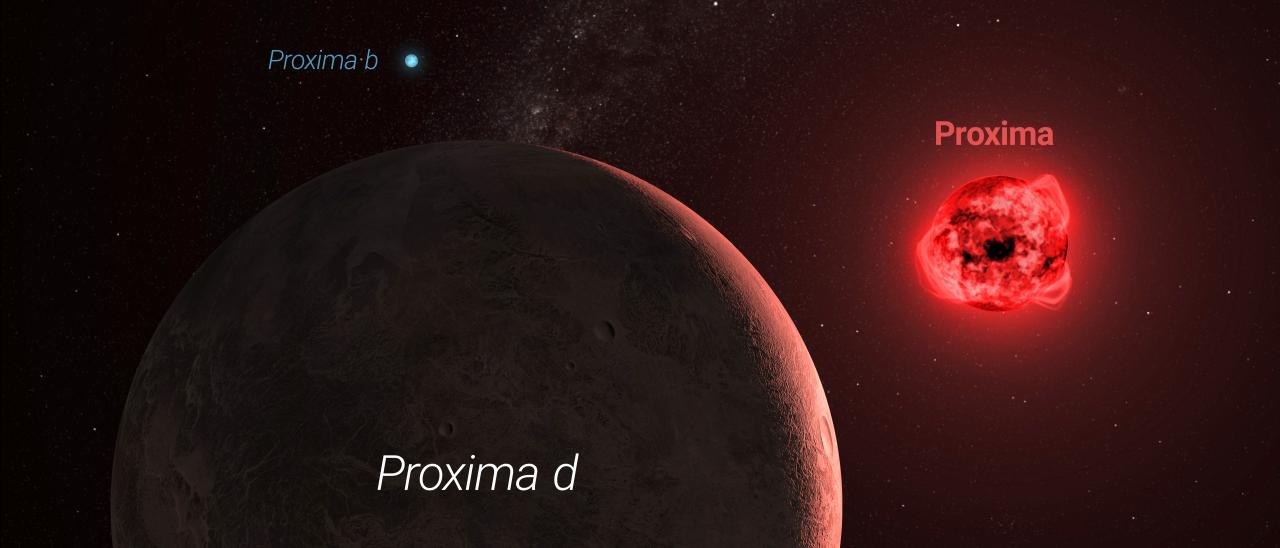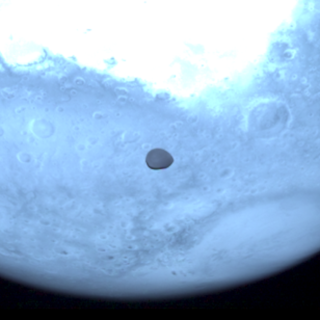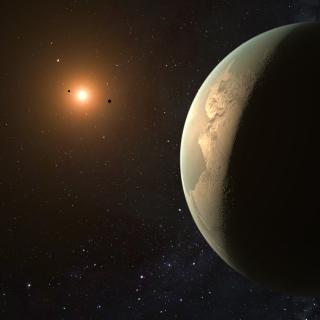The new infrared spectrograph NIRPS, built with the participation of the Instituto de Astrofísica de Canarias (IAC) and installed on the 3.6-metre telescope at ESO’s La Silla Observatory in Chile, has achieved its first scientific results, with four articles published today in the journal Astronomy & Astrophysics and one more accepted for publication. The data confirm its ability to detect Earth-like planets in the infrared for the first time with a precision better than one metre per second. One of the papers, led by IAC researcher Alejandro Suárez Mascareño, confirms the presence of a planet one-third the mass of Earth orbiting Proxima Centauri, the closest star to the Sun.
After two years of Guaranteed Time observations, the NIRPS (Near InfraRed Planet Searcher) spectrograph delivers its first scientific results. Designed to detect terrestrial planets around cool, low-mass stars, NIRPS has proven capable of reaching, for the first time with an infrared instrument, a radial velocity precision better than one metre per second, a necessary requirement for detecting the subtle motion induced by these planets on their host stars.
“NIRPS was conceived as a high-precision tool to study planets orbiting red-dwarf stars. These first results show that the instrument can go even further than we expected,” says François Bouchy, researcher at the Observatoire de Genève and co-Principal Investigator of the NIRPS consortium, together with Rene Doyon, from the University of Montreal.
The scientific team has chosen Proxima Centauri, the star closest to the Sun, as one of its first targets. It is a red dwarf located just 4.2 light-years away. Proxima hosts a confirmed planet, Proxima b, in the habitable zone, and two candidates whose existence remained unverified. Using data from NIRPS, the team led by Alejandro Suárez Mascareño, IAC researcher, has clearly detected the signal of Proxima b, demonstrating the instrument’s capability to detect this type of planet. By combining NIRPS observations with other long-term datasets from instruments such as HARPS, ESPRESSO, and UVES, they have also been able to robustly confirm the existence of the inner planet Proxima d, which has just one-third the mass of Earth.
“This work highlights NIRPS’s potential to tackle the major challenges of detecting Earth-like planets around cool stars, the most abundant in the solar neighbourhood” explains Suárez Mascareño. “Proxima is the closest stellar system to the Sun, and also one of the most intriguing. Being able to confirm and characterise its planets with this level of precision is a major step toward finding truly Earth-like worlds.”
The Spanish contribution to the development of NIRPS was coordinated by the Instituto de Astrofísica de Canarias, which was responsible for the design, development, and implementation of the instrument’s fibre-link system. “At the IAC, we have been involved in the technological development of NIRPS from the start, and we are also actively engaged in the international scientific effort to exploit its capabilities,” says Jonay I. González Hernández, IAC researcher and lead of the Spanish contribution to the project. “These first results not only validate the technical performance of the instrument but also demonstrate its enormous potential for exoplanetary science.”
Alongside its radial velocity measurements, NIRPS is also beginning to show its capacity to study exoplanet atmospheres. In one study led by Romain Allart of the University of Montreal, NIRPS data were used to detect delayed atmospheric escape in WASP-69b, a misaligned warm Saturn-like planet. On the other hand, research led by Valentina Vaulato, a PhD student at the University of Geneva, has revealed how an opaque fog of charged particles hides the presence of other chemical signals in the atmosphere of WASP-189b, an ultra-hot gas giant. These studies pave the way for a new generation of ground-based atmospheric observations in the near-infrared. In addition, Joao Gomes da Silva, from the University of Porto, has studied the effect of magnetic activity on infrared spectral lines, which is key to separating the effects due to planetary signals from those caused by stars.
All these studies, including the results on the Proxima Centauri system, the atmospheric analyses, and the technical description of the NIRPS instrument, are published today in the journal Astronomy & Astrophysics. From the IAC, in addition to Alejandro Suárez Mascareño and Jonay I. González Hernández, researchers Rafael Rebolo, Atanas Stefanov, and Nicola Nari also participated.
🎞️ Images and animations
Articles:
F. Bouchy, R. Doyon, F. Pepe, C. Melo, E. Artigau et al. “NIRPS joining HARPS at ESO 3.6m. On-sky performance and science objectives”. 2025, A&A, 700, A10. DOI: https://www.aanda.org/10.1051/0004-6361/202453341
R. Allart, Y. Carteret,. V. Bourrier, L. Mignon, F. Baron et al. “NIRPS detection of delayed atmospheric escape from the warm and misaligned Saturn-mass exoplanet WASP-69b”. 2025, A&A, 700, A7. DOI: https://www.aanda.org/10.1051/0004-6361/202452525
A. Suarez Mascareno, E. Artigau, L. Mignon, X. Delfosse, N. Cook, et al. “Diving into the planetary system of Proxima with NIRPS. Breaking the metre per second barrier in the infrared”. 2025, A&A, 700, A11. DOI: https://www.aanda.org/10.1051/0004-6361/202553728
V. Vaulato, S. Pelletier, D. Ehrenreich, R. Allart, E. Cristo et al. “Hydride ion continuum hides absorption signatures in the NIRPS near-infrared transmission spectrum of the ultra-hot gas giant WASP-189b”. 2025, A&A, 700, A9. DOI: https://www.aanda.org/10.1051/0004-6361/202452972
J. Gomes da Silva, E. Delgado-Mena, N.C. Santos, T. Monteiro, P. Larue et al. “Blind search for activity-sensitive lines in the near-infrared using HARPS and NIRPS observations of Proxima and Gl 581”. 2025, A&A. DOI: https://doi.org/10.1051/0004-6361/202555013
Contact at the IAC:
Alejandro Suárez Mascareño, alejandro.suarez.mascareno [at] iac.es (alejandro[dot]suarez[dot]mascareno[at]iac[dot]es)
Jonay I. González Hernández, jonay.gonzalez [at] iac.es (jonay[dot]gonzalez[at]iac[dot]es)
